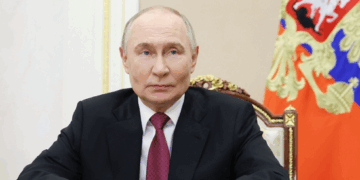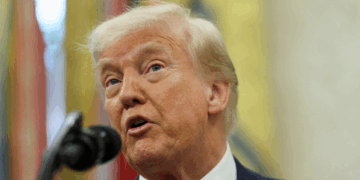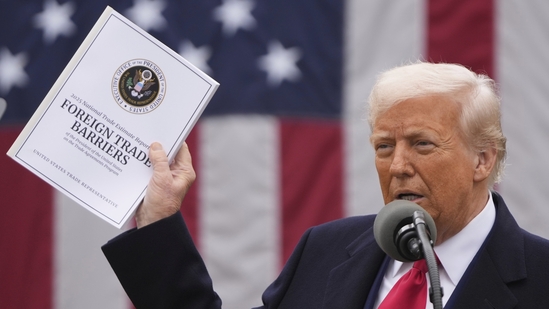The Trump administration’s latest reciprocal tariff policy has set alarm bells ringing across the world. The United States has implemented a new system for calculating tariffs, which moves away from the traditional approach of matching trade barriers and instead focuses on a country’s trade deficit with the US. This shift is expected to have far-reaching consequences for global trade and diplomatic relations.
How Does the New Tariff Calculation Work?
The United States Trade Representative (USTR) outlined the method behind these tariffs in a statement released on Wednesday. Instead of calculating tariffs based on specific trade barriers, the Trump administration is now determining them using a trade deficit-based formula.
Here’s how it works:
- The US takes a country’s trade surplus with America and divides it by its total exports.
- The resulting percentage is then halved to determine the tariff rate.
- The calculation is based on 2024 trade data from the US Census Bureau.
For example, China had a trade surplus of $295 billion with the US in 2023, while its total exports to the US stood at $438 billion. This results in a ratio of 68%, which is then divided by two—leading to a 34% tariff rate imposed on Chinese goods.
Which Countries Are Affected?
Several key US trading partners are now facing higher tariffs under this policy:
- Russia – Though heavily sanctioned, Russia has been an energy supplier to the US. However, details on its tariff rate remain unclear.
- China – Imposed tariffs stand at 34%, significantly impacting trade between the two economic giants.
- Japan, South Korea, and the European Union – These nations are subject to tariffs based on their trade deficits with the US, with varying rates.
- India – While Trump’s executive order listed a 27% tariff rate, his announcement mistakenly displayed 26%, causing some confusion.
- Saudi Arabia & Canada – Countries with a trade balance or surplus with the US were assigned a flat 10% tariff.
Confusion Over Tariff Rates
The tariff announcement led to some discrepancies. For instance, South Korea’s rate was listed as 25% in Trump’s announcement but 26% in the official USTR document. India saw a similar discrepancy between 26% (Trump’s statement) and 27% (official records). The White House has yet to clarify these inconsistencies.
Trump’s Justification: Reducing the Trade Deficit
President Trump has long argued that the US has been at an unfair disadvantage in global trade, with many countries allegedly taking advantage of the American economy. He claims these tariffs will correct the imbalance and prevent countries from “looting” and “raping” the US. The administration insists that this formula is the best way to reduce the US trade deficit while encouraging fair trade practices.
Global Reactions and Economic Concerns
The new tariff system has already sparked concern among global markets and trading partners. Many economists warn that imposing tariffs based on trade deficits could lead to retaliatory actions, disrupt supply chains, and increase prices for US consumers.
Moreover, there are fears that these tariffs could push US allies closer to economic partnerships with China and Russia, shifting trade patterns in a way that might not benefit America in the long run.
Conclusion: A New Era for US Trade Policy?
Trump’s reciprocal tariff policy marks a significant shift in global trade dynamics. While aimed at reducing America’s trade deficit, the formula’s long-term effects remain uncertain. As markets react and countries weigh their responses, this policy could shape the future of international trade for years to come.
Whether this approach will strengthen or weaken the US economy is yet to be seen, but one thing is clear—Trump’s tariffs have already changed the rules of the game.








 India
India












